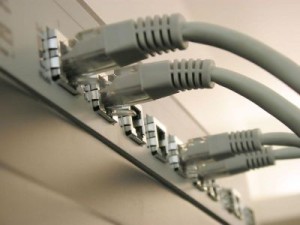 Alcatel-Lucent and Telekom Austria have completed the world’s first trial of G.fast with vectoring, a combination of technologies enabling gigabit broadband over existing copper networks.
Alcatel-Lucent and Telekom Austria have completed the world’s first trial of G.fast with vectoring, a combination of technologies enabling gigabit broadband over existing copper networks.
To help keep DSL a relevant option for the last part of a broadband connection, the so-called “last mile,” vendors are working on a number of technologies to increase the broadband speeds that can be delivered over old telephone lines.
However, calling G.fast a last-mile technology is somewhat misleading, because the technology is only intended for distances up to 100 metres or 0.06 miles. But at that distance and less it helps copper keep up with fibre. The trial achieved a maximum speed of 1.1Gbps over 70 metres and 800Mbps over 100 metres over a single, good-quality cable, according to Alcatel-Lucent. On older, unshielded cables, the trial managed 500Mbps over 100 metres on a single line, it said.
With the help of vectoring, G.fast also works over multiple copper lines at the same time. Vectoring already improves the performance of VDSL2 to 100Mbps over existing copper connections at up to 400 metres by removing crosstalk interference. It works by continuously analysing the noise conditions on copper lines, and then creates a new anti-noise signal to cancel it out, much like noise-cancelling headphones.
Just like next-generation mobile networks, G.fast uses more spectrum to achieve the higher speeds.
Alcatel-Lucent isn’t alone in working on G.fast products and will compete with the likes of Huawei Technologies. The plan is to have a standard ready next year, followed by chipsets in 2015 and first-generation commercial products in 2016, which won’t have support for vectoring, according to Stefaan Vanhastel, marketing director for the Fixed Networks business at Alcatel-Lucent.
The company and the rest of the industry are working hard to make G.fast a commercial reality at an interesting time for the broadband market. At the end of 2012, analyst company Point Topic said that subscriber numbers for copper-based broadband services had fallen for the first time. Recent data from the company showed that this decline has accelerated in 2013, with about 2.8 million subscribers lost in the first three months of the year.
Copper remains the dominant technology, but Point Topic believes that a shift in technology is occurring, particularly to fibre and hybrid fibre, as consumers require and are willing to pay for higher speeds from their broadband connections, it said.
It is in these hybrid networks, which use fibre for as long as possible and then switch to copper, where Alcatel-Lucent G.fast will find a home. The technology will, for example, be used for just the last tens of metres to avoid having to enter a subscriber’s home, which is both time-consuming and expensive, Vanhastel said.





